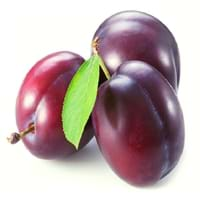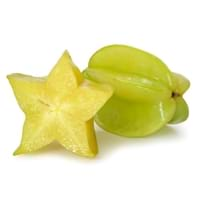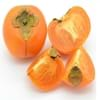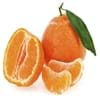Health Benefits
Cancer prevention, Cures gastro-intestinal troubles, Heart care, Increase in haemoglobin, Prevents diabetes
Cancer prevention, Heat stroke treatment
General Benefits
Anti-inflammatory properties, Boosts immune system, Digestive aid, Eye care, Flu treatment, Helps in weight loss, Maintains healthy cholesterol level, Treatment of common cold
Anti oxidant properties, Anti-inflammatory properties, Digestive aid, Maintains healthy cholesterol level, Treatment of sore eyes
Skin Benefits
Anti-aging benefits, Brightens and lightens complexion, Reduces wrinkles, Skin revitalization, Treatment of dark spots
Anti-aging benefits, Heals sunburn, Skin rejuvenation
Hair Benefits
Prevents hair loss, Promotes longer and healthier hair, Protects hair, Remedy for split ends, Treatment of dandruff
Promotes longer and healthier hair, Protects hair
Allergy Symptoms
Abdominal pains, Anaphylaxis, Vomiting
NA
Side Effects
Allergic reaction
Nausea, Vomiting
Best Time to Eat
As a snack in the late afternoon, Eat the fresh ones, avoid mixing with any other foods, don't eat after meal., Morning time (before lunch)
As a snack in the late afternoon, Eat the fresh ones, avoid mixing with any other foods, don't eat after meal., Strictly avoid empty stomach
Vitamin B5 (Pantothenic Acid)
Vitamin C (Ascorbic Acid)
Vitamin K (Phyllochinone)
Phytosterol
Not Available
Calories in Fresh Fruit with Peel
Calories in Fresh Fruit without Peel
Not Available
Not Available
Calories in Frozen Form
Not Available
Calories in Canned Form
Not Available
Calories in Jam
Not Available
Calories in Pie
Not Available
Type
Tree fruit
Tree fruit
Season
Summer
Autumn, Spring, Summer
Varieties
Victoria, President, Czar, Ariel, Avalon and Oullins Gage
King, Bell, Sri Kembangan, Arkin and Fwang Tung
Color
Pink, Purple, Red
Golden yellow, Green
Inside Color
Yellow
Yellowish Green
Shape
Round
Oval and Star(Cross section)
Taste
Juicy, Sweet, Tart
Crisp, Juicy, Sweet
Origin
Caucasus
Sri Lanka
Grows on
Trees
Not Available
Soil Type
Clay, Loam, Sandy loam
Loam, Well-drained
Climatic Conditions
Cold
Moist, Warm to hot climate
Facts about
- In china, plums are used for production of wine.
- A chemical called amygdalin found in plum seeds, turns into toxic compound in human body.
- Plum tree produces fruit 3-5 yrs after planting.
- When carambola is cut horizontally, it forms a star.
- It is believed that carambola helps to cure hangover.
- Entire carambola is edible, including its skin.
- 2 varieties of carambola are cultivated: tart & sweet.
Top Producer
China
Taiwan
Other Countries
Bosnia, Chile, India, Iran, Italy, Romania, Serbia, Turkey, United States of America
Australia, Guyana, India, Israel, Malaysia, Philippines, United States of America
Top Importer
United Kingdom
Europe
Top Exporter
Chile
Malaysia
Botanical Name
Prunus domestica
Averrhoa carambola
Synonym
Not Available
Not Available
Subkingdom
Tracheobionta
Tracheobionta
Division
Magnoliophyta
Magnoliophyta
Class
Magnoliopsida
Magnoliopsida
Family
Rosaceae
Oxalidaceae
Species
P. domestica
A. carambola
Generic Group
Rose
Not Available
Difference Between Plum and Carambola
We might think that Plum and Carambola are similar with respect to nutritional value and health benefits. But the nutrient content of both fruits is different. Plum and Carambola Facts such as their taste, shape, color, and size are also distinct. The difference between Plum and Carambola is explained here.
The amount of calories in 100 gm of fresh Plum and Carambola with peel is 46.00 kcal and 31.00 kcal and the amount of calories without peel is Not Available and Not Available respectively. Thus, Plum and Carambola belong to Low Calorie Fruits and Low Calorie Fruits category.These fruits might or might not differ with respect to their scientific classification. The order of Plum and Carambola is Rosales and Oxalidales respectively. Plum belongs to Rosaceae family and Carambola belongs to Oxalidaceae family. Plum belongs to Prunus genus of P. domestica species and Carambola belongs to Averrhoa genus of A. carambola species. Beings plants, both fruits belong to Plantae Kingdom.









